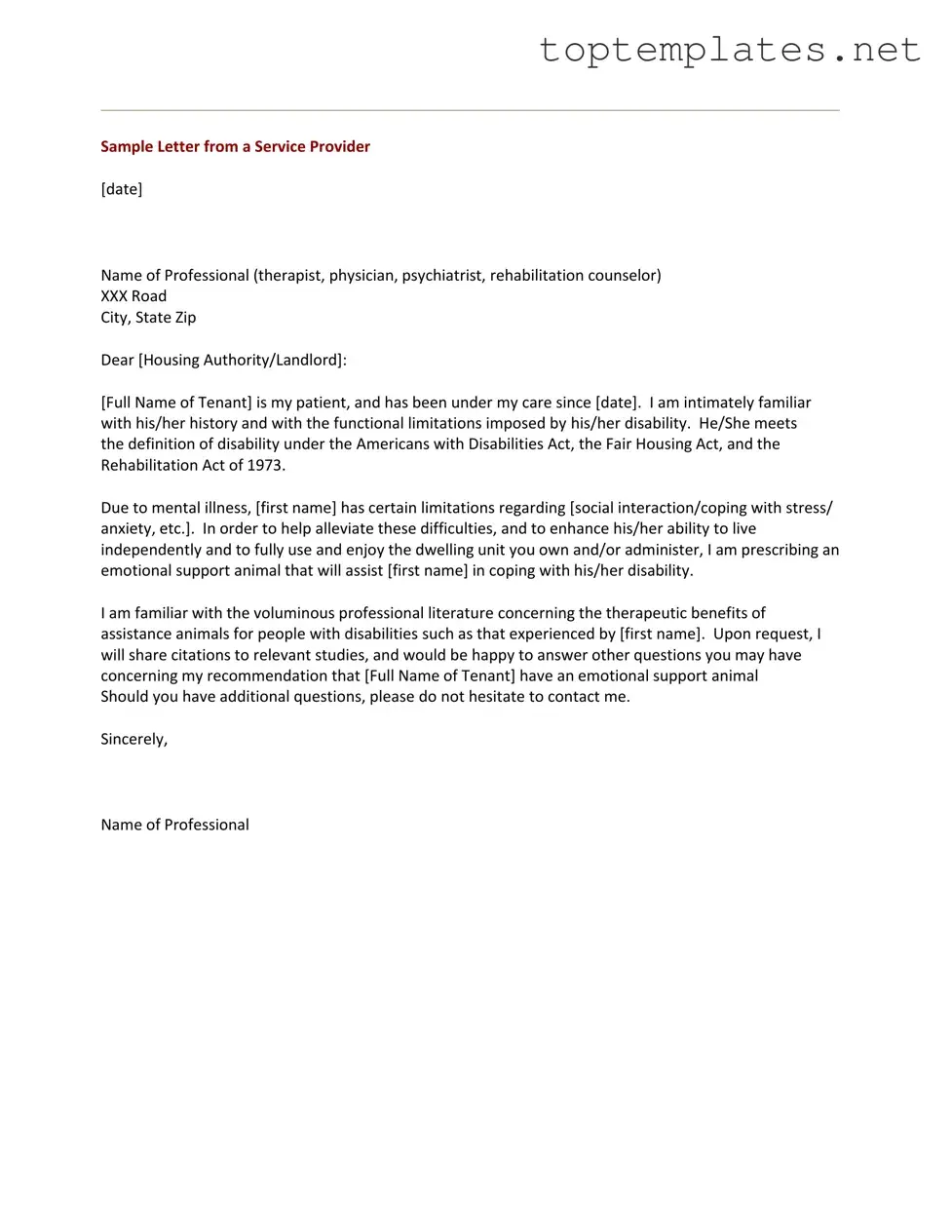What is an Emotional Support Animal (ESA) Letter?
An Emotional Support Animal Letter is a document provided by a licensed mental health professional (LMHP) that verifies a person's need for an emotional support animal as part of their treatment plan. This letter should outline that the individual has a mental or emotional disability recognized by the Diagnostic and Statistical Manual of Mental Disorders (DSM) and that the presence of the animal is essential for their mental health.
Who can issue an ESA Letter?
Only a licensed mental health professional (LMHP), such as a psychiatrist, psychologist, licensed clinical social worker, or other mental health professionals licensed to practice in your state, can issue a legitimate ESA Letter. It's important that the professional has a current understanding of your mental health condition before issuing the letter.
Is an ESA Letter the same as a prescription for a pet?
No, an ESA Letter is not a prescription for a pet. It is a formal document that states you have been diagnosed with an emotional or mental health condition by a licensed professional and that an emotional support animal helps mitigate symptoms of that condition. While it does not prescribe a pet, it legitimizes the need for the ESA as part of your treatment plan.
What are the benefits of having an ESA Letter?
Having an ESA Letter grants you rights under federal laws, such as the Fair Housing Act (FHA), allowing you to live with your emotional support animal even in housing with no-pet policies. Furthermore, while not always broadly recognized for public access and travel as service animals, an ESA Letter can sometimes help negotiate access with individual airlines or accommodation providers.
How long is an ESA Letter valid?
Typically, an ESA Letter is valid for one year from the date it was issued. It is advisable to check the requirements of specific institutions or legal entities since they might have different validity periods. Renewing your letter annually is generally a good practice to ensure it remains current.
Can landlords refuse an Emotional Support Animal?
Under the Fair Housing Act, landlords cannot refuse an ESA based merely on their no-pets policy. However, there are exceptions, such as buildings with four or fewer units where the landlord occupies one unit, or single-family houses sold or rented without a broker. Landlords can also deny an ESA if it poses a direct threat to the health and safety of others or would cause substantial property damage.
Do I need to tell my landlord about my ESA before moving in?
While you are not required to disclose the need for an emotional support animal before signing a lease, transparency can often lead to a smoother process. Providing your ESA Letter upon application or immediately after signing can help avoid conflicts or misunderstandings. Keep in mind, landlords have the right to request verification, i.e., the ESA Letter, but cannot demand detailed medical records or a diagnosis.
Can any animal be an Emotional Support Animal?
Technically, any animal that provides comfort, companionship, and support in alleviating a person's emotional or mental symptoms can be considered an emotional support animal. Unlike service animals, which are typically dogs trained for specific tasks, ESAs are not restricted to dogs or any specific species. However, it's essential the animal is manageable in public settings if they are to accompany you to places outside your home.
How can I get an ESA Letter?
To obtain an ESA Letter, you must be assessed by a licensed mental health professional who can certify your need for an emotional support animal as part of your treatment plan. You can start by discussing your mental health with your current therapist, psychiatrist, or another healthcare provider. If they are qualified and understand your condition well, they can issue the letter. If not, they might refer you to someone who can.
Is there a difference between an ESA and a service animal?
Yes, there's a significant difference. Emotional support animals provide companionship and help alleviate symptoms of emotional or mental conditions through their presence. In contrast, service animals are specifically trained to perform tasks and do work directly related to the individual's disability. While ESAs are protected under the Fair Housing Act, they do not have the same broad public access rights as service animals, which are covered under the Americans with Disabilities Act.

